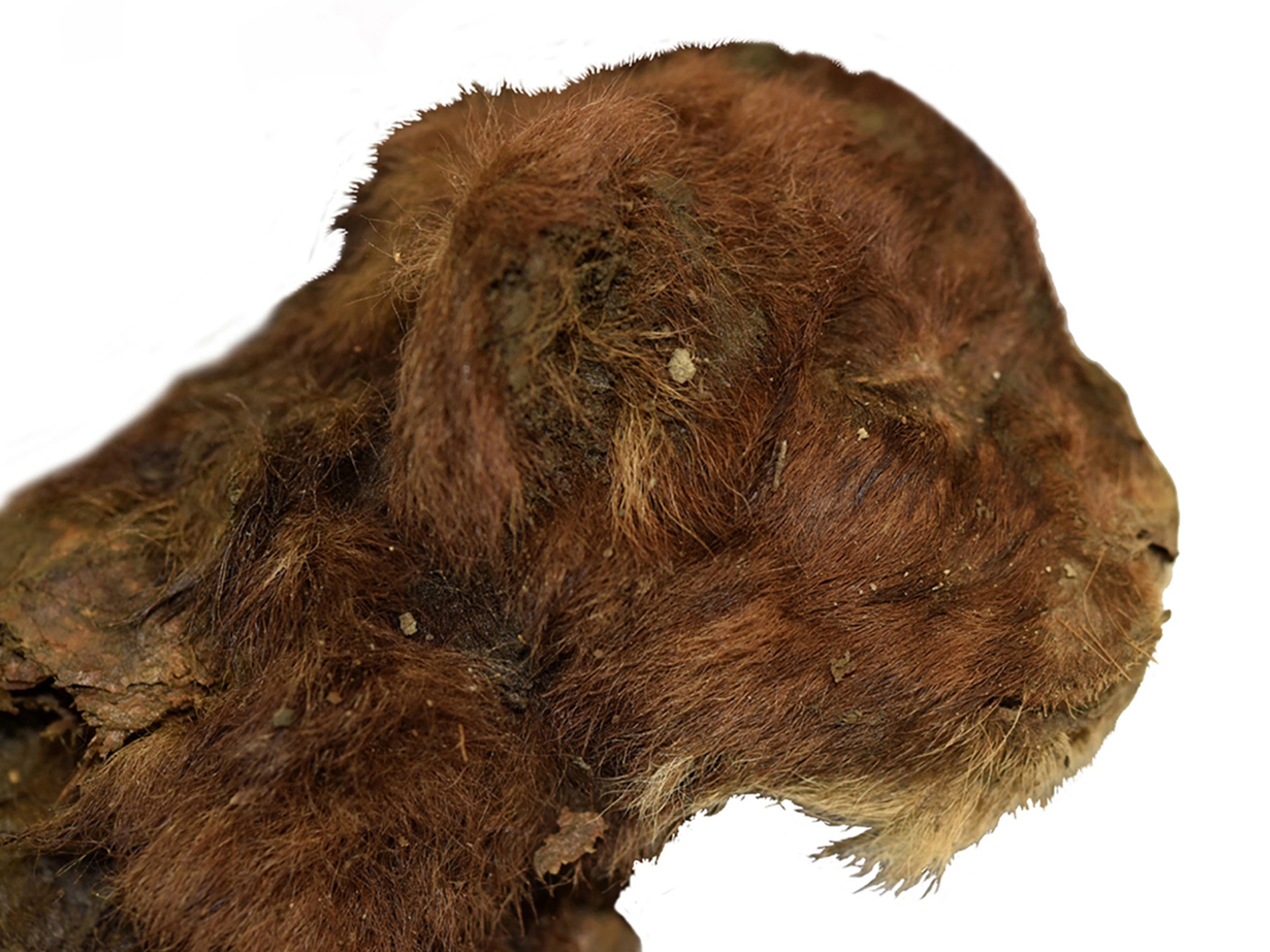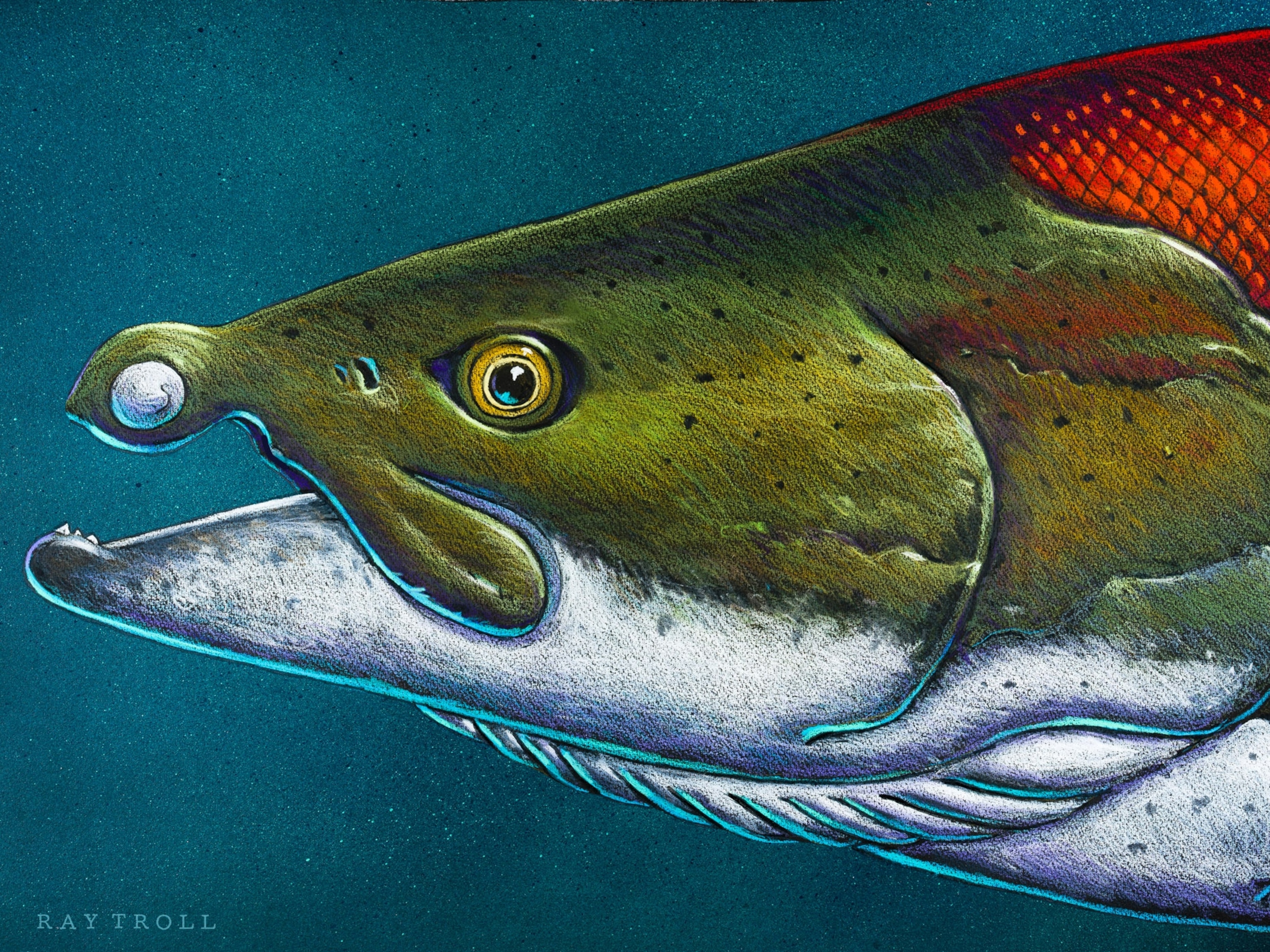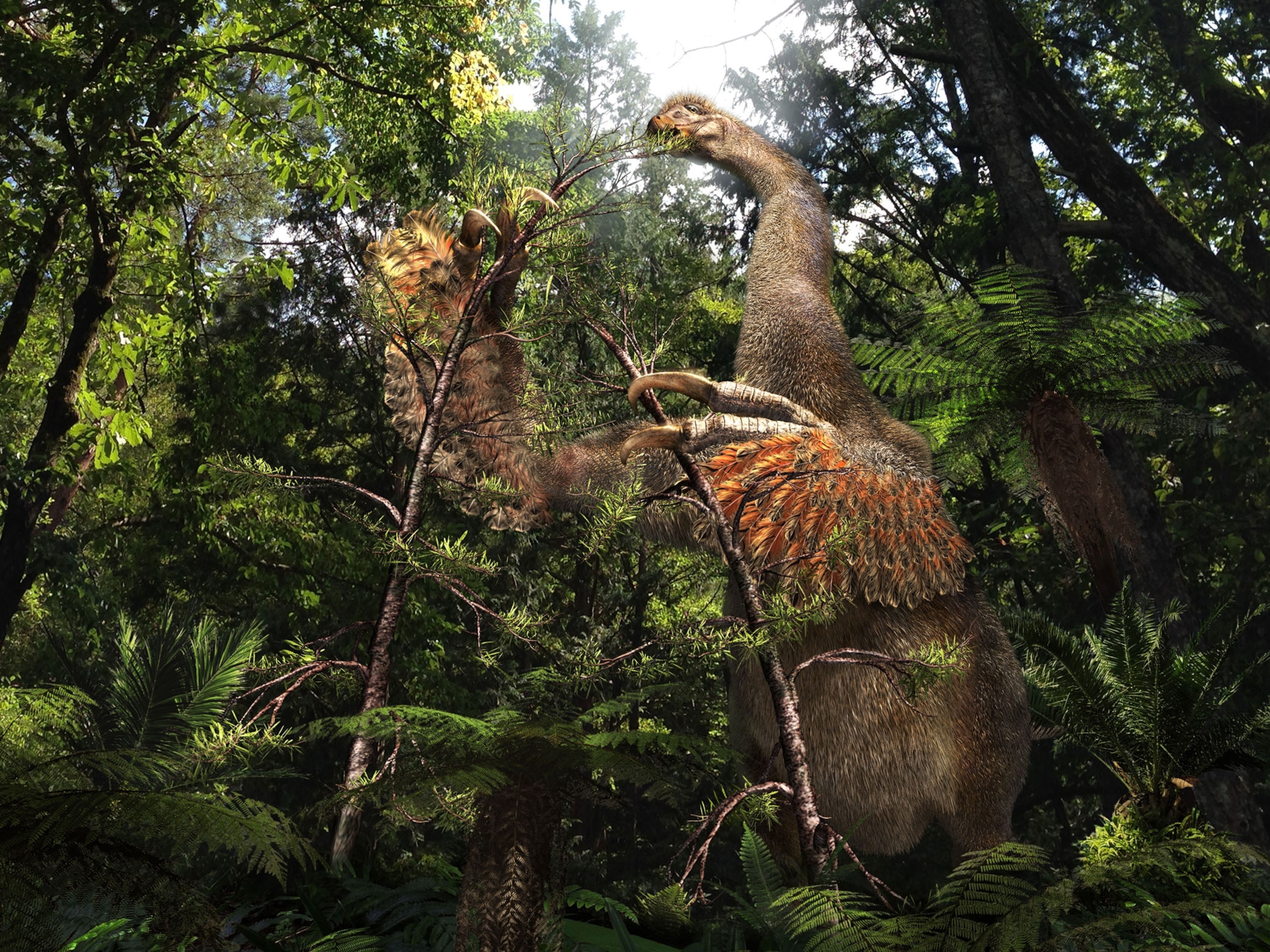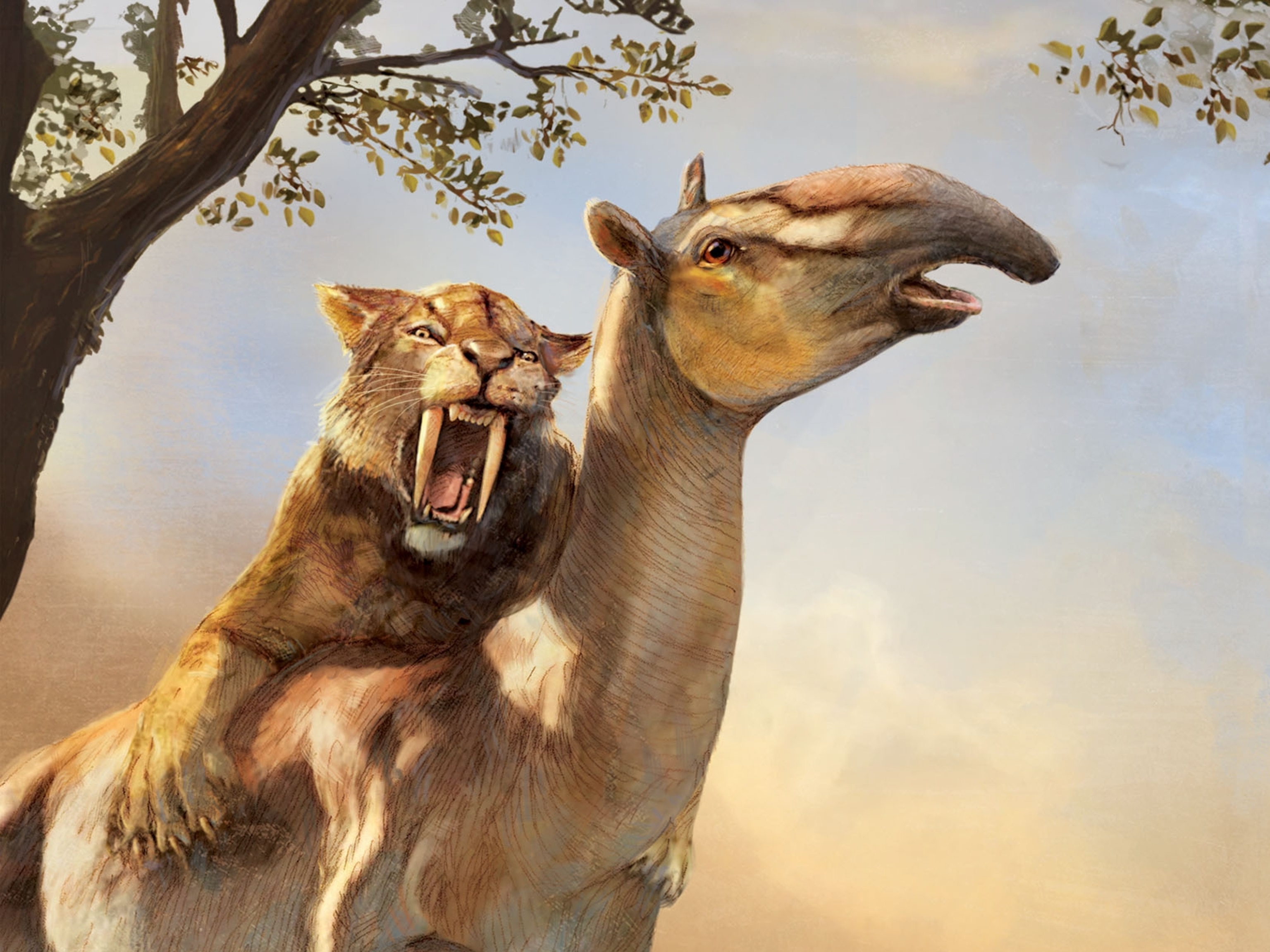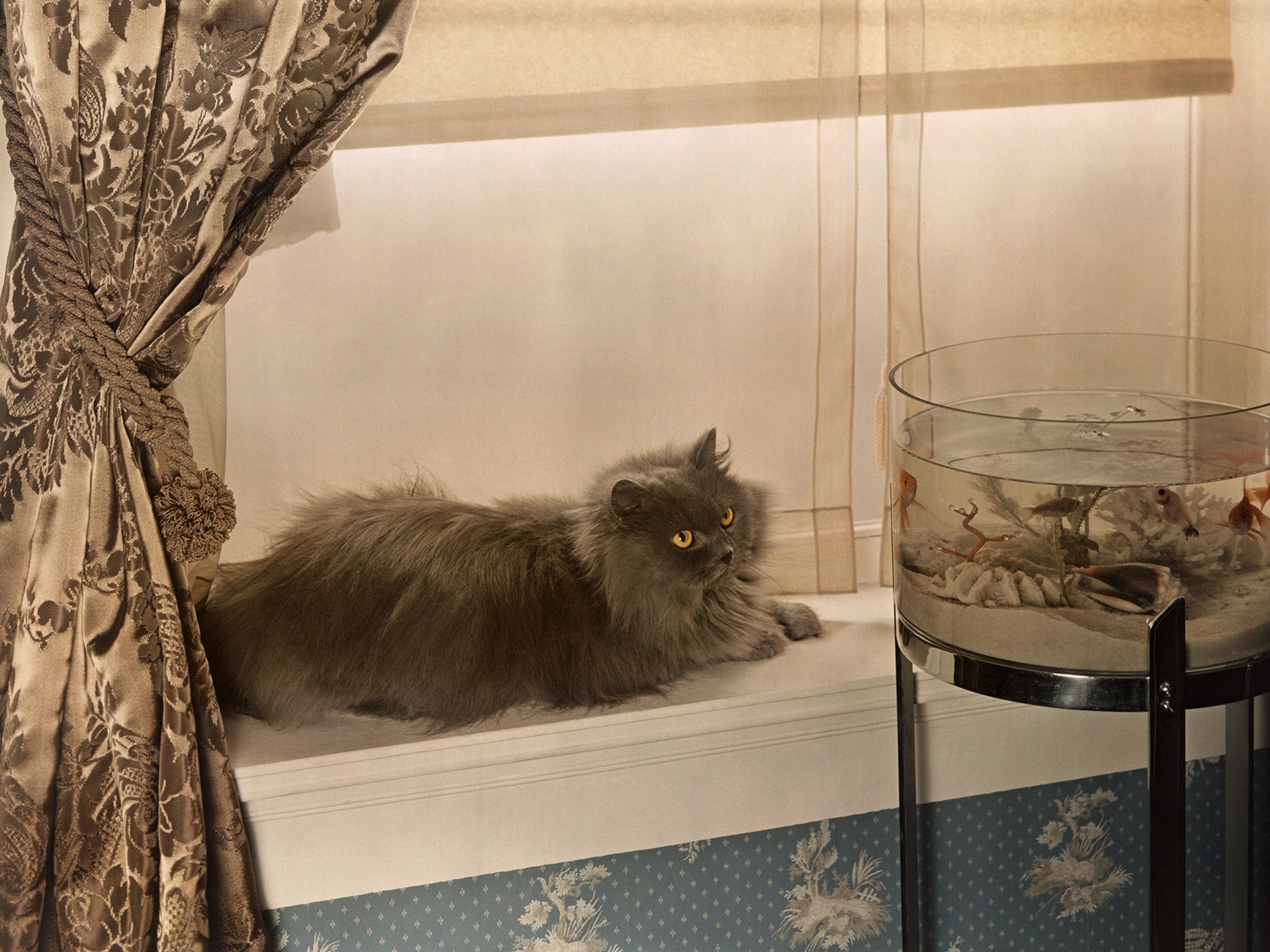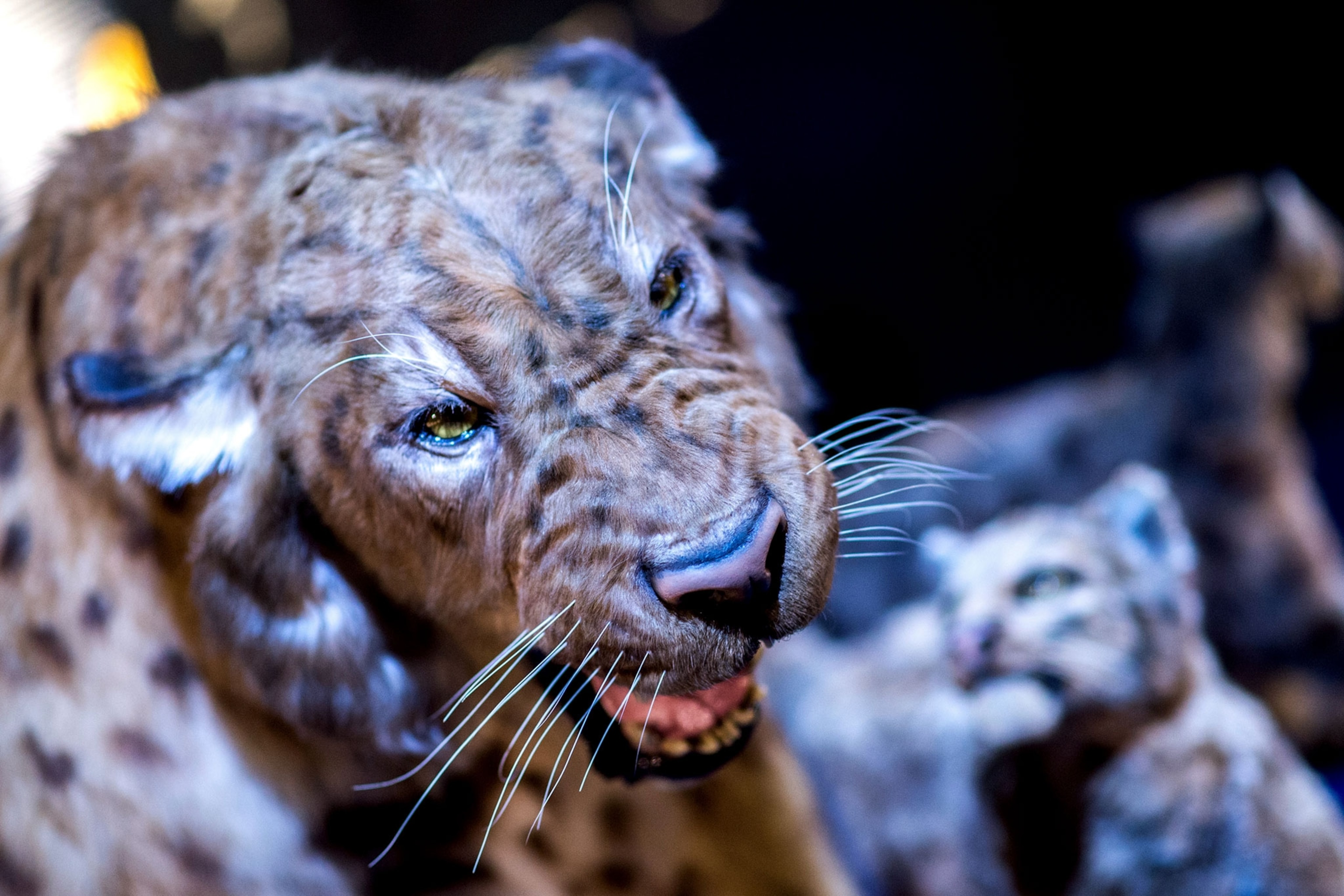
This Saber-Toothed Cat Mingled With Modern Humans
A surprisingly young fossil jaw found in Europe is helping scientists better climb the sabertooth family tree.
When modern humans first wandered into Europe some 50,000 years ago, this snaggle-toothed cat was probably there to greet them.
Painstaking genetic analysis of a jawbone dredged up from the bottom of the North Sea has now confirmed the theory that the so-called scimitar cat Homotherium latidens lived in Europe much longer than previously believed.
Until recently, the earliest fossil of a Homotherium in the region dated to about 300,000 years ago, and many paleontologists had assumed that’s when the large cat went locally extinct. (Find out how saber-toothed cats killed even though they had weak bites.)
But in 2002, radiocarbon dating of the North Sea jawbone suggested that the species was still prowling around Europe as early as 28,000 years ago—and the new DNA work backs up that estimate.
Scientists were also able to reconstruct highly detailed mitochondrial genomes from a North American branch of Homotherium and from a completely separate species, Smilodon populator—the animal many people (wrongly) know as a saber-toothed tiger.
Mitochondrial DNA is passed down only from mothers, which means the genes are inherited intact from generation to generation. This type of DNA also only makes copies of itself from itself, meaning mutations rack up at a regular rate. That makes it easier for scientists to trace and see relationships between both individuals and species.
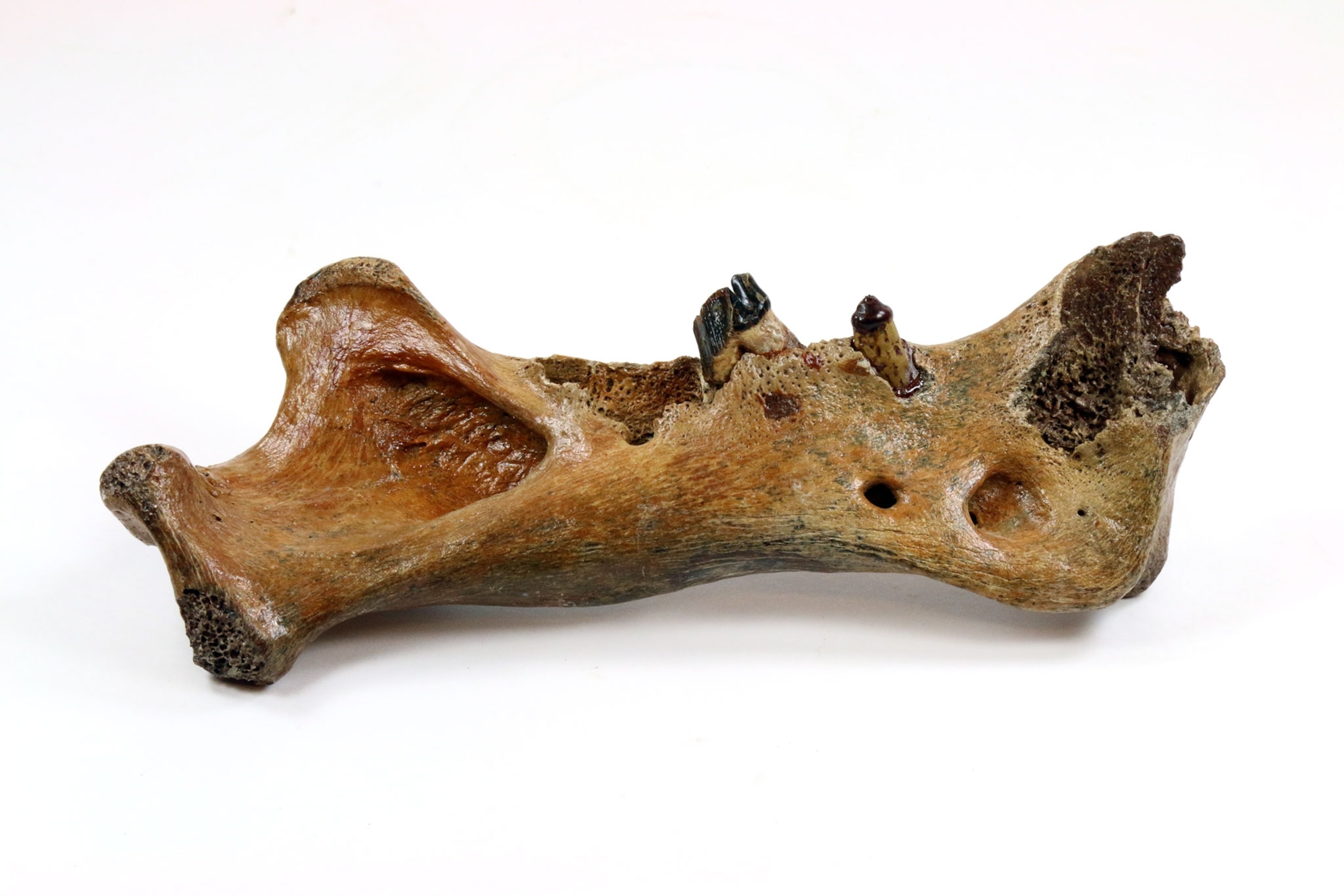
The new work shows that both Homotherium and Smilodon share a common ancestor with all cats living today, one that lived around 20 million years ago.
So, does that mean bits of ancient saber-toothed DNA might still lurk in Fluffy’s genes? As of right now, we just can’t tell.
“Mitochondrial DNA is inherited from a single lineage, so we can’t say whether or not it survives in modern cats. To really investigate what kind of relationship they have, we would need nuclear DNA,” says study co-author Johanna Paijmans, a researcher at the University of Potsdam in Germany.
“But,” she adds, “my cat is lying on the couch right now definitely not being a saber-toothed cat.”
Wipe Out
Instead, the analysis firms up the evolutionary history of Homotherium and Smilodon and solidifies their position within the overall cat lineage.
For starters, the work revealed so few differences between European and North American Homotherium DNA that the groups should probably be considered part of the same species, Paijmans says. Until now, they’d been classified as two species because of slight variations in bones from different locations.
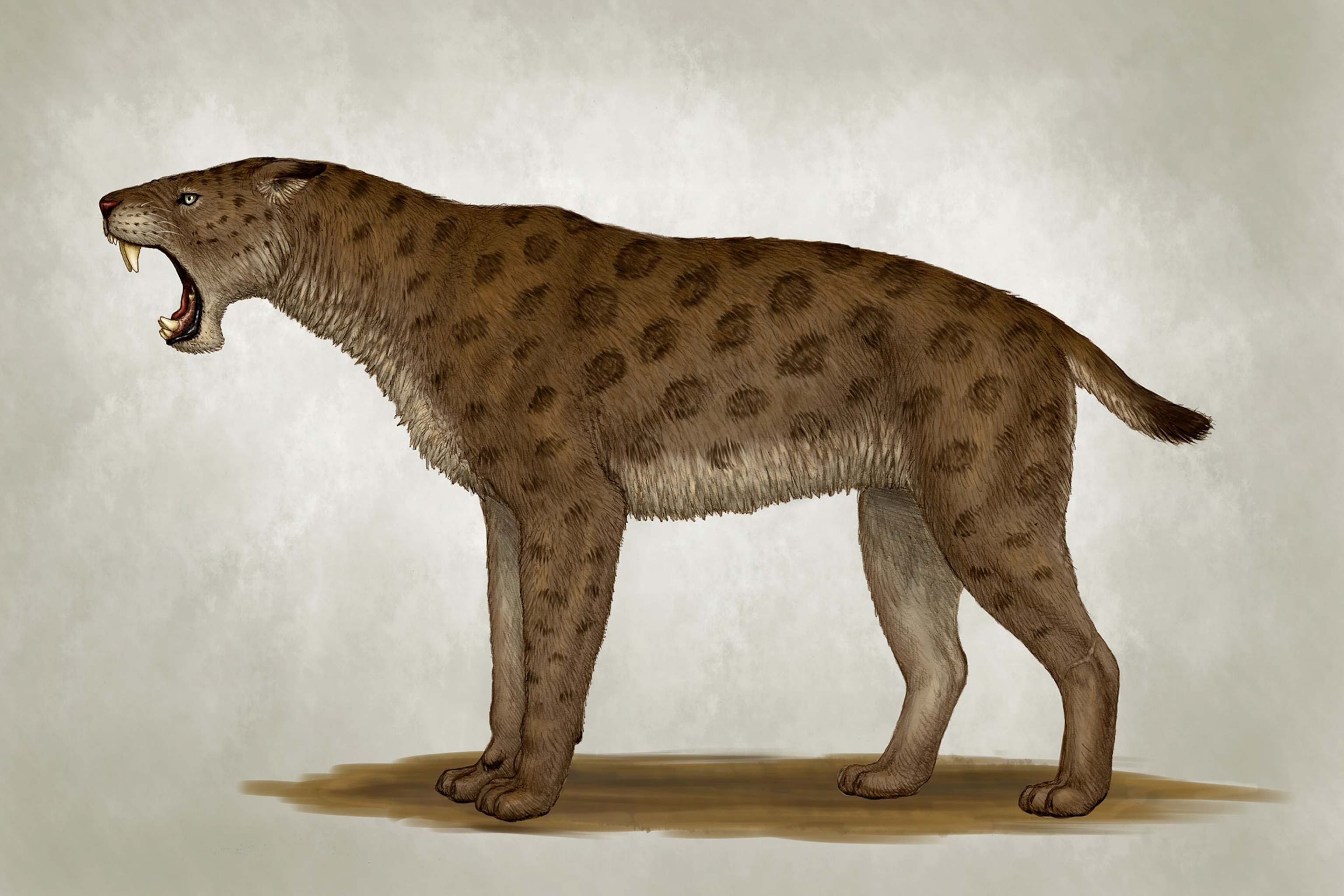
The research also adds new clues to why Homotherium ultimately vanished. Given the revised time frame, it’s likely that the scimitar cat was yet another victim of the extinction event that wiped out other Ice Age megafauna, including the woolly mammoth and the cave bear.
It’s thought those animals were driven to extinction by a mix of environmental factors, which may have also included competition for resources with modern humans, who were spreading throughout Europe and the Americas at this time. (See pictures of Ice Age predators found alongside the oldest human in the Americas.)
“Knowing that an animal like Homotherium survived for so long may help us understand the extinction dynamics of felids today,” Paijmans says. “But today’s a very different world from then, and there are things Homotherium didn’t have to deal with that modern animals do.”
Future work with the saber-toothed genomes may turn up yet more clues. For instance, it’s possible low genetic diversity was one of the factors that led to the species’ global demise, says Larisa DeSantis, a paleontologist at Vanderbilt University who studies Pleistocene megafauna.
"Much like stock investments, diversifying one’s portfolio reduces risk and increases an individual’s likelihood of success,” DeSantis says.
“While some stocks—and similarly some species—may get lucky and perform well, decades of research suggest that low genetic variability makes species increasingly more vulnerable and less able to respond to unanticipated changes in their environment, which may have ultimately led to the eventual extinction of Homotherium."

